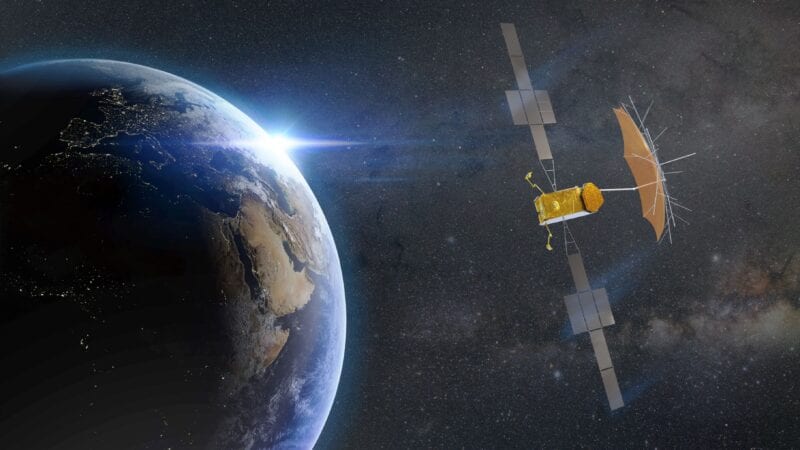Latest News

Airbus will build Thuraya 4-NGS for Yahsat, based on the all-electric Airbus Eurostar Neo Platform. Photo: Airbus
Al Yah Satellite Communications Company (Yahsat) has selected Airbus to build Thuraya 4-NGS, the United Arab Emirates’ (UAE) next-generation L-band telecommunications satellite. This milestone order will come with an overhaul of Yahsat’s space and ground platforms. The satellite is scheduled for operation in 2024. The satellite will increase capacity and coverage over Europe, Africa, Central Asia, and the Middle East, and enable mobility solutions. Yahsat outlined customer segments including defense, government and enterprise
Thuraya CEO Ali Al Hashemi said in a Thursday press conference that this deal is the start of a new phase in the journey of the Yahsat mobile satellite service subsidiary, shifting away from Mobile Satellite Service (MSS).
“The next-generation program comes at an important moment for company history ensuring continuity of service for the next 15 years. The next-generation system is a transformational program, a shift from MSS solutions, voice being one of them, to data-centric and solution-rich platforms. The road led to where Yahsat is today isn’t the same that will take us forward,” Al Hashemi said.
Yahsat and Thuraya said this commitment takes its total investment to more than $500 million. The deal also includes an option for Airbus to build Thuraya 5-NGS, identical to Thuraya 4-NGS, which would strengthen coverage over the Asia-Pacific region.
Based on the electric Airbus Eurostar Neo Platform, Thuraya 4-NGS will incorporate a 12 meter L-band antenna and a payload with on-board processing providing routing flexibility of up to 3200 channels with dynamic power allocation over a large number of spot beams.
Jean-Marc Nasr, head of Airbus Space Systems commented: “Building on a relationship with Yahsat that dates back more than 10 years, our selection is testament to the innovation and engineering excellence of Airbus’ Geostationary [GEO] satellites. Thuraya 4-NGS, as well as being electric, will also benefit from our latest processed payload technology giving increased flexibility and adaptability over the course of its life in orbit.”
Get the latest Via Satellite news!
Subscribe Now